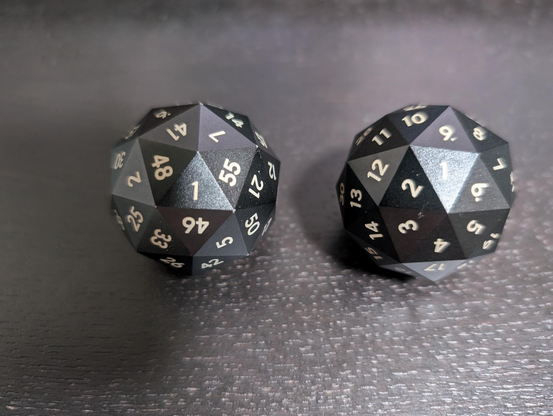Zeitpunkt Nutzer Delta Tröts TNR Titel Version maxTL Fr 26.07.2024 00:01:07 61.958 +1 3.580.868 57,8 Fosstodon 4.2.10 500 Do 25.07.2024 00:00:10 61.957 +1 3.577.506 57,7 Fosstodon 4.2.10 500 Mi 24.07.2024 00:01:07 61.956 0 3.574.077 57,7 Fosstodon 4.2.10 500 Di 23.07.2024 00:00:03 61.956 -3 3.570.705 57,6 Fosstodon 4.2.10 500 Mo 22.07.2024 00:01:10 61.959 +1 3.567.825 57,6 Fosstodon 4.2.10 500 So 21.07.2024 00:01:07 61.958 +1 3.564.861 57,5 Fosstodon 4.2.10 500 Sa 20.07.2024 00:01:10 61.957 +1 3.561.604 57,5 Fosstodon 4.2.10 500 Fr 19.07.2024 13:57:34 61.956 -1 3.558.474 57,4 Fosstodon 4.2.10 500 Do 18.07.2024 00:00:27 61.957 +1 3.553.476 57,4 Fosstodon 4.2.10 500 Mi 17.07.2024 00:01:10 61.956 0 3.550.157 57,3 Fosstodon 4.2.10 500
Aaron Toponce ⚛️:debian: (@atoponce) · 05/2021 · Tröts: 6.258 · Folger: 2.795
Fr 26.07.2024 00:24
To help motivate this, consider the following: I have two d60 dice. On one of the d60, every number is randomly and uniformly distributed through the die. The other, the numbers are in numerical order in a spiral out design with adjacent faces.
Both d60 are machine precision balanced and perfectly fair.
Which die produces more random results when tossed? The randomly distributed d60 or the numerically ordered d60?
Spoiler alert: the toss determines how the d60 lands, not what's printed on it.

Photo of two d60 side-by-side. On the left, the numbers are uniformly but randomly distributed across the the faces. On the right, the numbers are numerically increasing in a counter-clockwise fashion across the faces.

Photo of two d60 side-by-side. On the left, the numbers are uniformly but randomly distributed across the the faces. On the right, the numbers are numerically increasing in a counter-clockwise fashion across the faces.
[Öffentlich] Antw.: 0 Wtrl.: 0 Fav.: 0